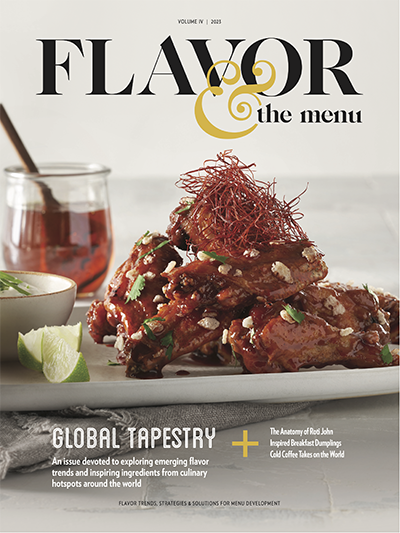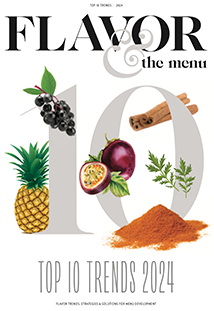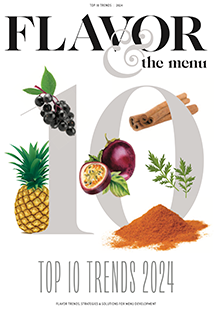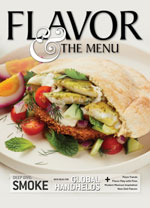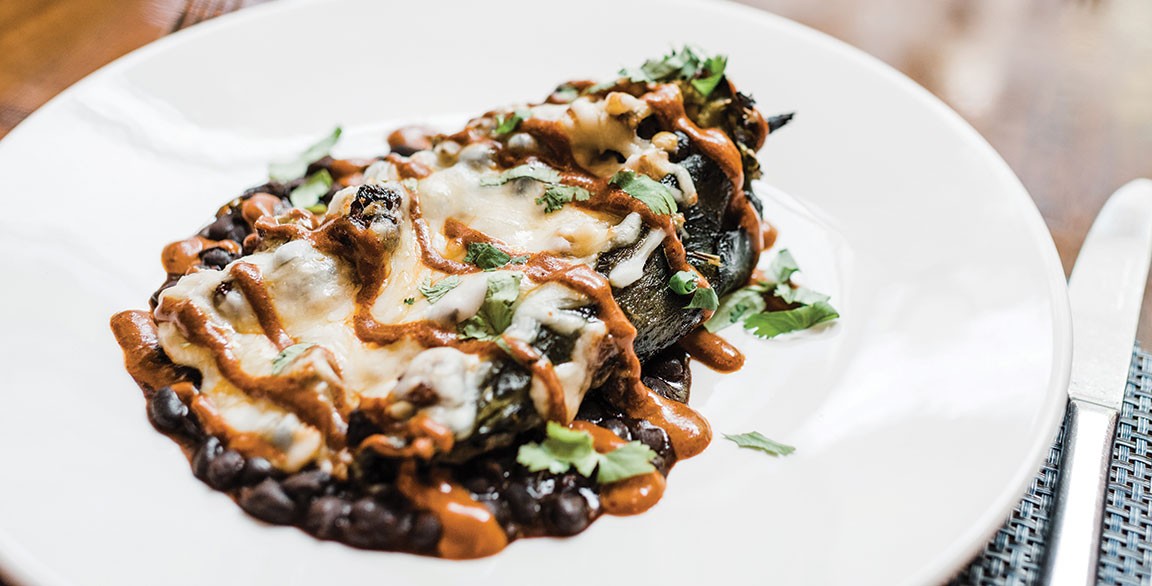

Singular ingredients in the plant world inspire chefs to develop incredible flavors and techniques, rendering guests jubilant at the sight of an embered carrot or a lime-marinated coconut. But culinary pioneers in this country who have helped make plant-forward cuisine sexy, craveable and broadly appealing, like Dirt Candy’s Amanda Cohen and Vedge’s Rich Landau, look beyond singular ingredients for serious inspiration. They look to global cuisines that celebrate plants as part of their heritage and culture. Of course, a large number of countries fall into that category and each offers a unique flavor story. For many restaurants in the U.S. wanting to expand or evolve their plant-based offerings, Mexico’s draw is particularly strong.
The fundamental components of Mexican cuisine are plant-based, and they include familiar, versatile ingredients such as: legumes, corn, avocado, tomatoes, fruit, chiles, squash, mushrooms and cacao. Incredible flavor building is a signature of this ancient cuisine, helping drive continued interest by American diners in Mexican flavors and formats, both authentic and adapted. It also makes many of those same diners open to plant-forward menu items anchored in this beloved cuisine. “Long before today’s food trends, Mexico’s warm climate drove its native peoples to develop a cuisine based around a variety of plant-based ingredients,” says Bryan Fisherkeller, associate R&D chef of Chicago-based CSSI Marketing + Culinary. “Mexican cuisine is centered on flavor, making it an ideal starting point for innovating in the plant-forward space.”
With a foundation of flavor and familiarity, the opportunity for innovation is striking, thanks to a few notable drivers. Streaming in a parallel current alongside the plant-forward phenomenon, the modern Mexican movement has been gaining both attention and momentum.
World-class menus in Mexican areas like Baja California, Oaxaca and Mexico City are highlighting indigenous ingredients prepared with contemporary craftsmanship. Many of those ingredients are plant-based, bringing the two currents to a confluence of inspiration.
Forward-leaning chefs in the U.S. are following a similar path, exploring produce and legumes through a modern Mexican sensibility—some taking the New American approach of the mash-up to create further intrigue.
MODERN MEXICAN’S FLAVOR GAME
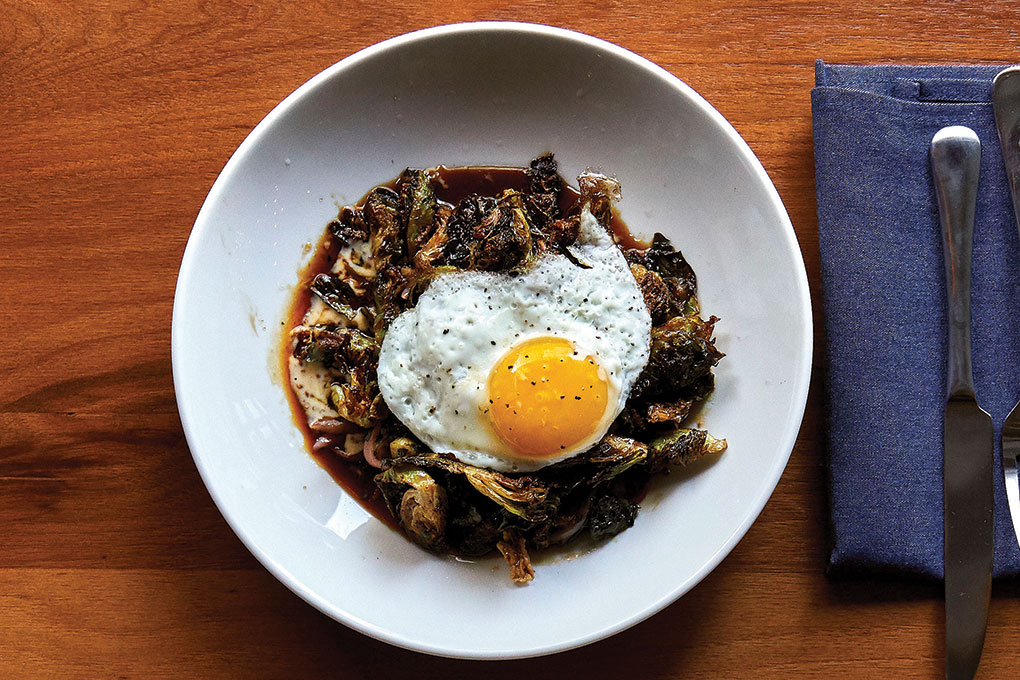 Taco
Taco Taco Lingo in Dallas serves Brussels with a roasted jalapeño glaze, pickled onions, chipotle-honey mustard and a fried egg.
Of course, to nail craveability, plant-forward recipe development must rely heavily on flavor building. Menus that star modern Mexican combinations shine a light on the possibilities. The key is in exquisite, surprising flavor play.
José Restaurant in Dallas menus an Ensalada de Calabaza, highlighting Mexican ingredients and weaving in intricate flavors: roasted spaghetti squash with pomegranate, queso panela, pickled red onion and verdolagas (purslane) in an hoja santa-pecan vinaigrette. The dish is decidedly Mexican, but could easily slide into other restaurant concepts.
High-impact ingredients are another standout of modern Mexican fare. Galaxy Taco in La Jolla, Calif., serves a plant-based shareable of tetelas, corn-masa triangles filled with black beans, queso fresco, peas, pea tendril salsa and hoja santa.
At Cosme in New York, Daniela Soto-Innes and Enrique Olvera serve elevated Mexican-inspired cuisine that has garnered international attention. Their plant-based dishes are a revelation and demonstrate the broader opportunity of strategically choosing Mexican ingredients that boost the “Wow!” factor and deepen the flavor experience. Cosme’s Badger Flame Beets are paired with blood orange and a beet chamoy. The restaurant also bends aguachile toward plants with its Aguachile Kohlrabi, flavored with pasilla chile and plum sesame.
At Empellón Taqueria, also in New York, a side of celery root gets dialed up with seasoned peanuts and salsa macha, made with árbol chiles, cider vinegar, toasted peanuts and sesame seeds.
More subtle moves can bring big flavor, too. Taco Lingo in Dallas boosts the crave factor with a roasted jalapeño glaze on its starter of Brussels sprouts, serving them with pickled onions, chipotle-honey mustard and a sunny-side egg.
The fast-casual concept Tocaya Organica, based in Southern California, relies on black beans and adobo tofu as plant-based proteins, then layers flavor with bowl build items like Spanish-style cauliflower rice, Tajín tortilla strips and roasted poblano dressing.
MASH-UP MOVES
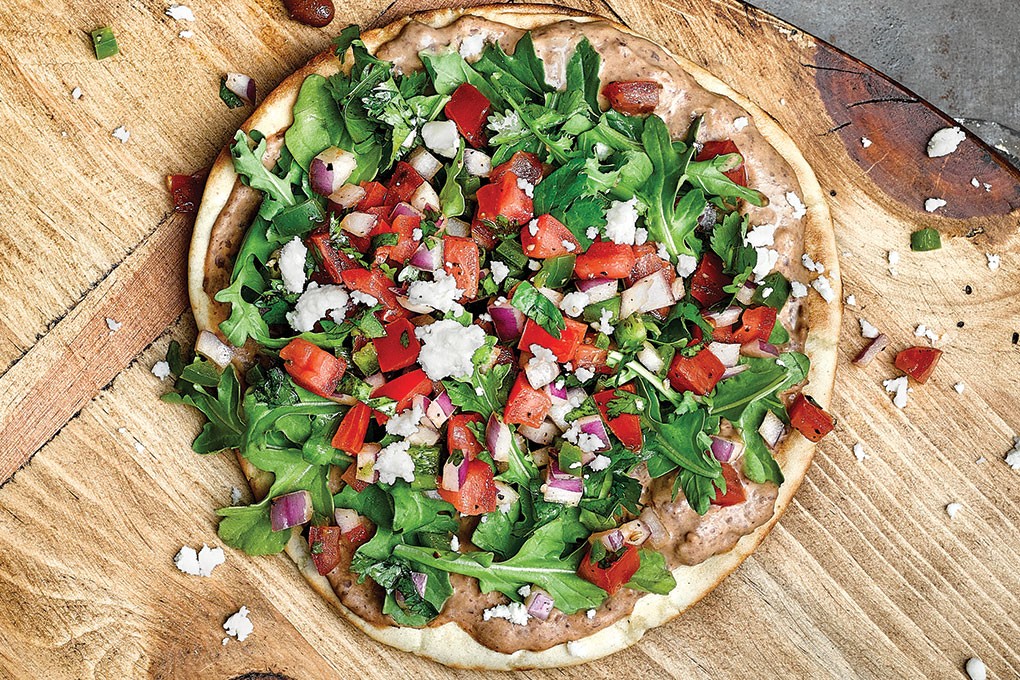 Lucy Beaugard
Lucy Beaugard The Vegetable Tostada at Lola in Denver celebrates plants with gorgeous color and sublime flavor, sporting black lentils and barley, charred scallion, avocado, pickled onion, radish and watercress.
When seeking plant-forward recipe development strategies, combining Mexican ingredients and flavors with those of other world cuisines fits squarely in today’s modern menus—the mash-up is here to stay.
“A helpful exercise in flavor mash-up innovation is to identify where different cultures’ foods overlap from an ingredient standpoint,” says CSSI’s Fisherkeller. He cites hummus as a prime example. “At its core, hummus is a simple bean purée. This makes it a perfect blank slate for flavor innovation. Chefs can start with a traditional Mediterranean hummus, but draw inspiration from Mexico when considering flavor inclusions and toppings. For instance: a jalapeño-styled hummus can be topped with black beans, cilantro, pico and blistered corn, and served with tortilla chips or chile-dusted pita chips.”
That Eastern Med-Mexican mash-up is a phenomenon catching fire, thanks, in part, to synergies in plant-based ingredients, a familiarity by consumers with both cuisines and inventive combinations. As evidence, look to the Oaxacan Hummus at Xtiosu Kitchen in Los Angeles, starring whipped black beans and spices and topped with extra-virgin olive oil, served with pita.
Broken Spanish, also in Los Angeles, mashes Eastern Med with Mexican in its Tostada, featuring white bean hummus, chermoula, roasted beets and goat cheese Cotija.
Baja-Med cuisine
Baja-Med cuisine, that combination of food from Mexico’s Baja California and the Mediterranean, carries a fresh, coastal vibe. Chefs here are shifting it toward their sensibilities, applying unique touches. Lola in Denver features Baja-Med cuisine infused with Colorado ingredients, guided by acclaimed chef/partner Javier Plascencia, a Tijuana native. His Vegetable Tostada showcases the happy marriage between the two regions, topped with black lentils and barley, charred scallion, pickled onion, radish, watercress and avocado.
Dishes like Lola’s tostada dish demonstrate new directions in Mexican flavor play. They also serve as a great example for how to increase plant-based options while ensuring incredible flavor appeal.
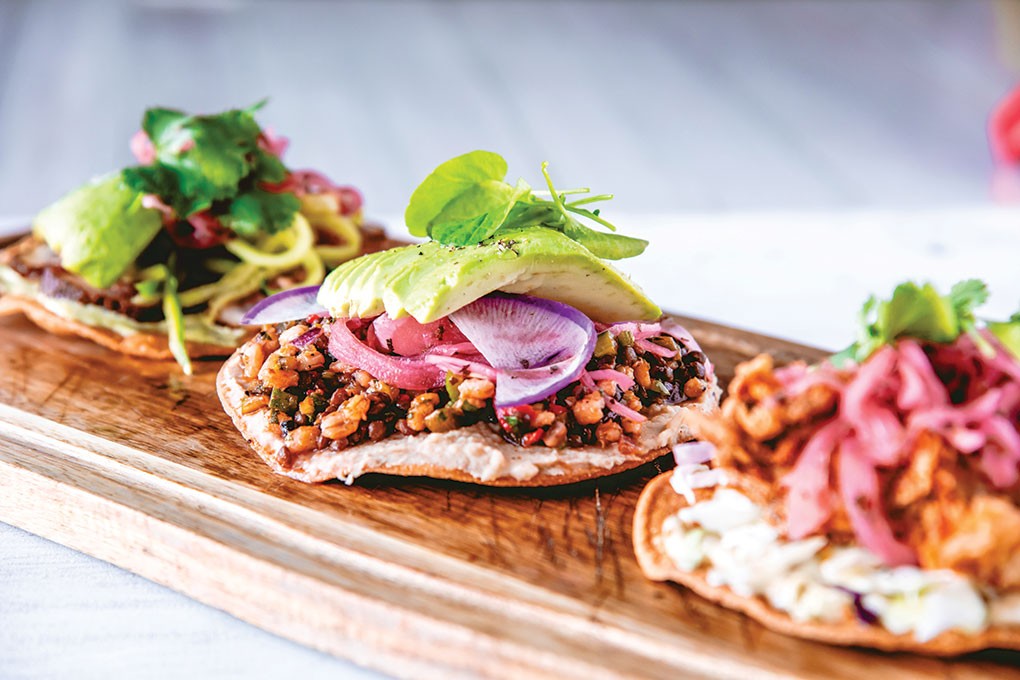 Bush’s Best
Bush’s Best Eastern Med meets Mexican in this Taco Fiesta Hummus Flatbread. Grilled pita is topped with hummus infused with black beans, queso fresco, pico and arugula.

